Did you know car window tints come in over 1,000 varieties? Some are clear, some reduce glare, and others block heat. Picking the right one can feel overwhelming. Whether you want better visibility, protection, or a sleek look, there’s a tint for you. Let’s explore your options and find the perfect match!
Benefits of Window Tinting
In the US and Canada, among every 10,000 people, an average of 6 to 7 people are diagnosed with skin cancer. Tinted windows provide the required protection needed to put an end to skin cancer cases.
Let’s look at the benefits, ranging from health to aesthetics window tint films has to offer:
UV Protection

Window tinting shields you from harmful UV rays. Too much UV exposure can damage your skin and increase the risk of skin cancer. Tinted windows block up to 99% of UV rays, helping to keep you safe.
It’s not just your skin that benefits. UV rays can fade car seats, carpets, and home furnishings. Over time, they cause cracking and wear. Tints help protect interiors, keeping them looking new for longer.
Heat Reduction
Tinted windows limit heat absorption by reflecting solar radiation. Less heat enters, making your space cooler. This is essential during hot weather when temperatures rise quickly. For this benefit, many commercial cars install window tint films to make the driver and passengers more comfortable.
By blocking infrared rays, window tinting reduces the greenhouse effect inside cars and homes. It helps maintain a balanced temperature and reduces air conditioning use.
Glare Reduction

Sudden glare from the sun or headlights can reduce reaction time. Window tinting absorbs and scatters excess light, helping maintain a clear field of vision. This can effectively make driving safer.
By selectively blocking high-intensity light waves, tinted windows balance brightness levels. That allows for better focus and reduces the risk of visual discomfort.
Privacy
Privacy matters, whether at home or on the road. Window tint films, especially the 20% and 30% tints, reduce transparency by filtering visible light. This makes it harder for outsiders to see inside, protecting your belongings.
By using advanced optical films, tints obscure interior details while maintaining outward visibility. This can help prevent break-ins and give passengers a greater sense of security.
Aesthetic Appeal

Adding a tint to your car enhances its overall design. The right shade can give a bold, classy, or subtle effect, making your vehicle stand out. It’s an easy way to upgrade the look.
Using stable pigment technology, high-quality tints resist fading. This means your car maintains a polished and well-maintained appearance during its lifespan.
Safety
Window tinting adds a protective layer to glass, increasing its strength. In an accident, the film helps keep broken pieces from scattering. This reduces the risk of injury.
Tint films use adhesive polymers that bond to the glass surface. This creates a safety barrier, preventing sharp shards from causing harm during impact.
Types of Window Tint
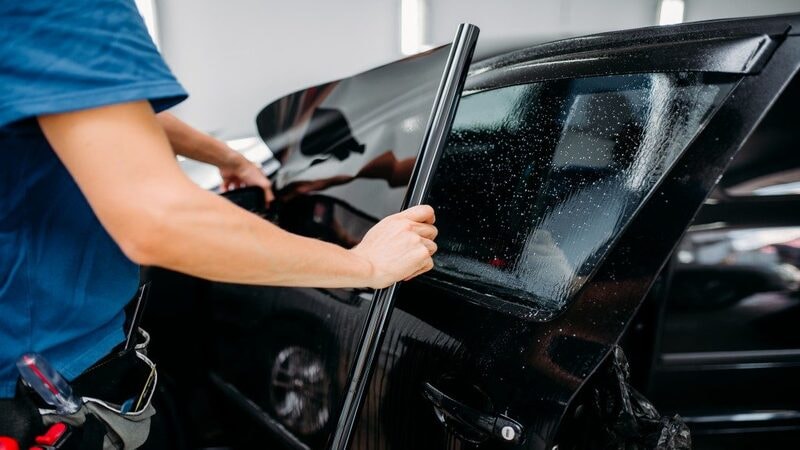
More and more new energy vehicles are equipped with sunroof glass designs. Your car’s glass magnifies heat and UV rays, making the interior feel like an oven. Window tinting, such as sunroof tint, helps block this effect, keeping you cooler and more comfortable.
With so many tint options available, choosing the right one can be overwhelming. Understanding the most popular types can help you make a better decision. Here are the different types you should know about:
Dyed Window Tint
For an affordable tint option, dyed film is a popular pick. It has a layer of dye between an adhesive base and a protective top. This design absorbs sunlight, cutting down glare inside the vehicle.
The dark shade increases privacy, making it difficult to see inside. While it does block some sunlight, it is more focused on style. It reduces outside visibility more than heat control.

Pros
- An affordable option that fits within most budgets.
- Enhances privacy by making windows less transparent.
- Helps protect interior materials by limiting sun exposure.
Cons
- Doesn’t block as much heat as high-performance tints.
- Tends to fade over time, needing periodic replacement.
- Offers only basic protection from UV radiation.
Best For
The most affordable window tint choice for cost-conscious drivers is dyed window tint. Dyed window tint gives darkness for privacy while maintaining an unadorned aesthetic. This type of tint works to reduce heat but lacks the advanced features of alternative products.
Metalized Window Tint
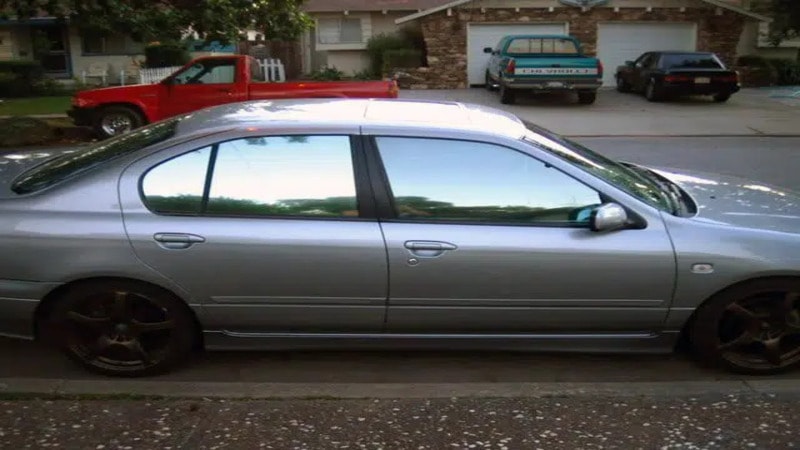
Metalized tint has fine metallic elements that reflect heat and protect against UV rays. It makes windows stronger while giving them a polished, mirror-like look. The film helps keep the car cooler than standard dyed tints.
Another advantage is its ability to reduce glass breakage. However, the metallic layer may disrupt signals for GPS, phones, and radios. While excellent for temperature control, it might interfere with electronics.
Pros
- Tiny metal particles reflect heat away efficiently.
- Boosts window toughness, reducing impact damage.
- Filters UV rays, preventing interior and skin damage.

Cons
- Pricier than dyed tints.
- May weaken radio and GPS reception
Best For
Window-tint users who want heat blocking together with glare management should choose metalized window tint. This tint makes an ideal selection for hot-climate residents and privacy seekers.
Ceramic Window Tint
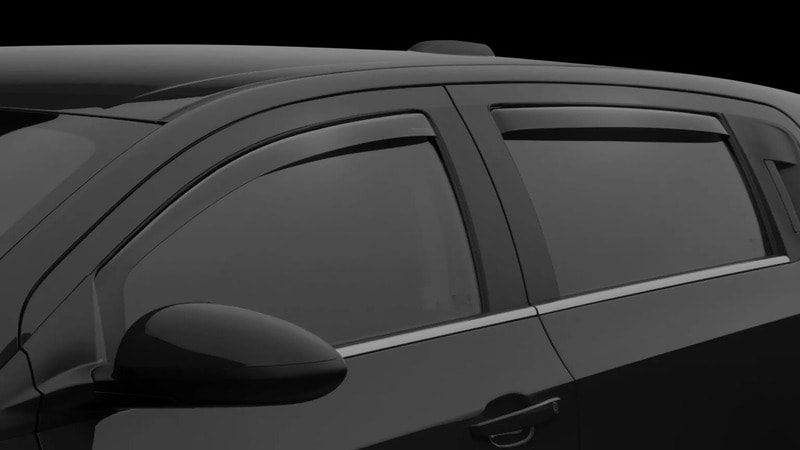
Ceramic tint blocks over 99% of UV rays with non-conductive ceramic particles, reducing skin damage. It keeps the car’s interior from fading or cracking. Heat rejection is excellent, ensuring a cooler ride.
Unlike metallic tints, it won’t disrupt GPS or radio signals. The film is durable and long-lasting. Its high clarity maintains clear visibility on the road.
Pros
- Excellent heat and UV defense, protecting interiors.
- No issues with GPS, radio, or phone signals.
- Stays clear and durable for long-term use.

Cons
- Higher price compared to standard tints.
- Installation requires experts, adding to costs.
- May need modifications for certain window systems.
Best For
Car owners who wish to achieve top-tier heat control should consider ceramic tint. It optimally helps maintain interior quality protection alongside providing superior privacy.
Hybrid Window Tint
Hybrid tint blends dyed and metallic layers to offer an ideal mix of style and functionality. It blocks heat and UV rays without creating harsh reflections or signal issues of metalized films.
Perfect for drivers looking for enhanced protection and comfort, this tint delivers the benefits of both types while avoiding their drawbacks. It’s a solid, all-around choice for window tinting.

Pros
- Balanced heat and UV protection.
- Less interference with electronic devices than with metalized tints.
- Subtle finish with reduced glare and heat.
Cons
- More expensive than dyed tint, but less than full metalized.
- It is not as private as darker tints.
- It may wear out faster than other options.
Best For
The hybrid tints provide a heat-controlling feature without heavy metal content. Such tinting is an ideal choice for those seeking improved heat control and visual clarity against harmful UV rays.
Carbon Window Tint

Carbon tint uses advanced carbon particles to block solar heat. This reduces the car’s interior temperature by up to 40%. Passengers feel more comfortable with less heat.
The matte finish gives a sleek, modern look without the glare of metallic tints. It also helps reduce energy use by lowering the need for air conditioning. They block fewer cell phone and GPS signals.
Pros
- Great at lowering the heat and keeping the car cool.
- Long-lasting, it won’t fade like dyed tints.
- Gives the car a stylish matte finish.

Cons
- More expensive than dyed or hybrid options.
- Installation is more involved, which increases installation costs.
- A Slight reduction in visibility compared to darker tints.
Best For:
The smooth carbon finish on window tint suits people who need adequate heat protection combined with low reflectivity and interior sun protection.
Choosing the Right Window Tint
Key Factors
You should choose window tint based on four vital specifications which include color options, UV blocking capabilities, infrared filtering features, and glare reduction technology. The appropriate tint adds extra comfort by controlling heat and sunshine.
Legal Considerations
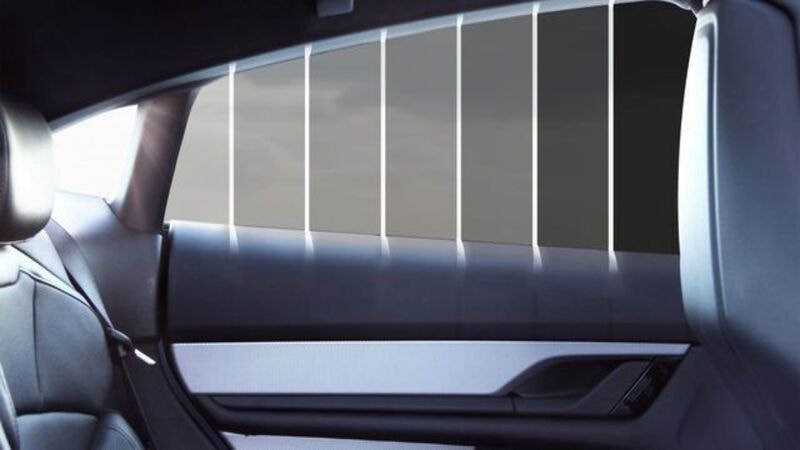
You will find window tints in various darkness levels, such as 50% tint and 70% tint, which range from pure clear to completely dark. Your selection of window tint shade depends both on personal choice and governmental regulations. Certain states enforce regulations concerning the level of window tint a person can use.
The Florida tinting laws specifically ban any reflective elements from appearing on front windshields regardless of their position above the AS-1 line. Every front-side window in Florida needs to have transparency levels of at least 28 percent for visible light. To choose a legal window tint film, make sure to look into your region’s tinting laws.
UV Protection
Your choice of window tints should include ones that offer strong protection against UV rays. Films of high quality can effectively stop 99% of ultraviolet rays, thereby safeguarding both the interior of your vehicle and your skin exposure. The window tint offers two benefits: it prevents upholstery fading while blocking dangerous sunlight rays.
Ideal Tint Percentage
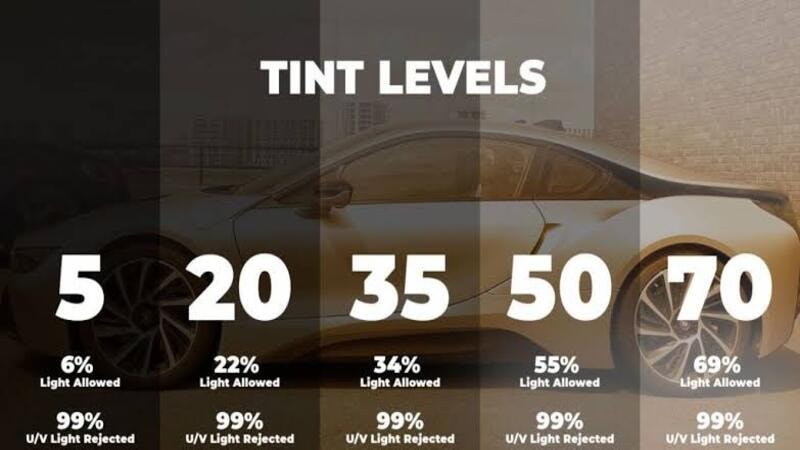
The ideal tint percentage depends on your needs. The combination of 35% and 20% tint offers adequate privacy along with sun protection. A window tint with 50% transparency provides the best combination of visibility along with sun protection. Being a law-abiding citizen, you must verify your area’s specified tint percentage.
Other Things That Matter
There are some extra factors to weigh in on. These will help you choose the exact tinting you need.
Personal Needs
The selection of window tint requires looking into your driving habits. Tinted windows with UV protection and heat-dimming capabilities should be chosen by drivers who spend many hours inside their vehicles. Privacy is essential to all — darker tints create complete privacy for everyone in a car.
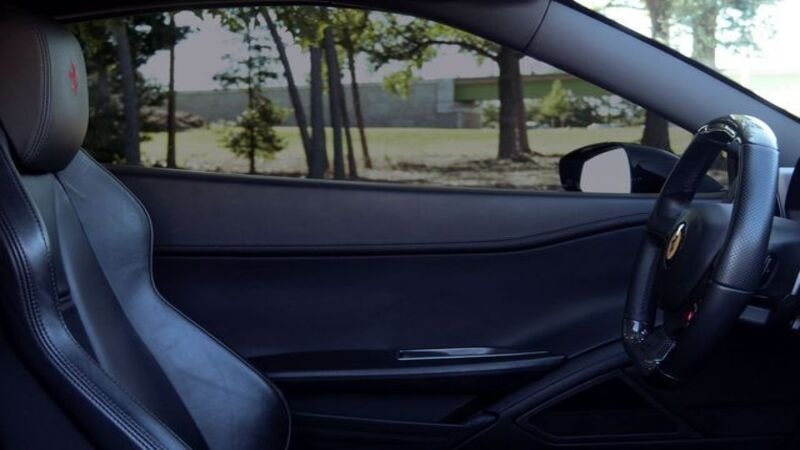
Vehicle Type
Window shapes, together with designs, differ among various types of vehicles. The tinting method used for smaller cars differs from the method applied to larger SUVs or trucks. The window tint should match your automobile’s design. Curved vehicle windows require customized cutting during the tint installation process.
Climate
Weather patterns in your local region influence which window tinted will be most beneficial. In hot climates, you should opt for tints with enhanced heat-fading properties. You should opt for tints with UV protection in areas with cold climates since these options maintain visibility.
The degree of sun exposure decides which tint darkness levels you should go with. Select a tint that brings comfort through its benefits and meets all necessary safety requirements.
Window Tinting Laws and Regulations

Each region has its own window tinting laws. It’s important to familiarize yourself with these regulations before applying tint. In the USA, some states, like California, have strict rules, while others, like Texas, are more lenient.
Tint darkness is measured by the Visible Light Transmission (VLT) percentage. Most states allow front windows to have a VLT of 70% or higher, but rear windows can be darker. Some states, like Florida, allow more reflectivity, while others, like New York, restrict it.
Non-compliance can lead to fines and the requirement to remove the tint. For example, in Illinois window tinting laws, improper tinting can result in a $50-$500 fine. Always check your local laws for both tint darkness and reflectivity limits to avoid costly penalties. Be sure your tint is installed by a certified professional to ensure it meets legal standards.
Maintenance and Care for Window Tints

To maintain window tints, use a soft microfiber cloth. Avoid abrasive materials that could scratch the film. Clean the windows with ammonia-free cleaner to prevent damage. Ammonia can break down the tint’s adhesive over time. Gently wipe in circular motions to avoid streaks. Regular cleaning keeps your tint looking new.
Keep all receipts and warranty information organized. This will help if you need repairs or replacement. Many tints come with warranties that last several years. Proper maintenance ensures the longevity of the tint. Avoid rolling windows down immediately after installation to let the tint cure properly. Regular care prevents peeling and fading, extending the life of the
FAQ
Q. How long can window tint be expected to last?
Window tint can last anywhere from 5 to 10 years, depending on its quality and installation. Higher-quality tints, such as ceramic, tend to last longer.
Q. Does car window tint lower interior temperature?
Yes, window tint helps block solar heat, keeping your car cooler on sunny days. This decreases the need for air conditioning, which could result in better fuel economy.
Q. What is your minimum order quantity (MOQ) for window tint films?
Our standard MOQ is 10 rolls, but we are flexible and can accommodate smaller orders to help new customers evaluate our products.
Q. Do you offer custom sizes and tint levels?
Yes, we provide a range of customization options, including various sizes and tint levels. Our team will work with you to ensure the window tint films meet your specific requirements.
Conclusion
When choosing window tint, consider your vehicle, lifestyle, and budget. Different tints offer various advantages, from heat reduction to UV protection. With proper care, the tint film can provide rich benefits for you in the long term. Therefore, installing car window tint films is truly a worthwhile investment to upgrade your precious vehicle!
Elevate Your Cars with Carlike Superior Tints-Quote now!
Are you looking for high-quality window tinting? Explore a wide range of window tints. Carlike’s window tint films are made from high-quality materials, providing superior UV protection, heat rejection, and enhanced privacy. They are durable, easy to install, and available in various tint levels to meet diverse needs.



